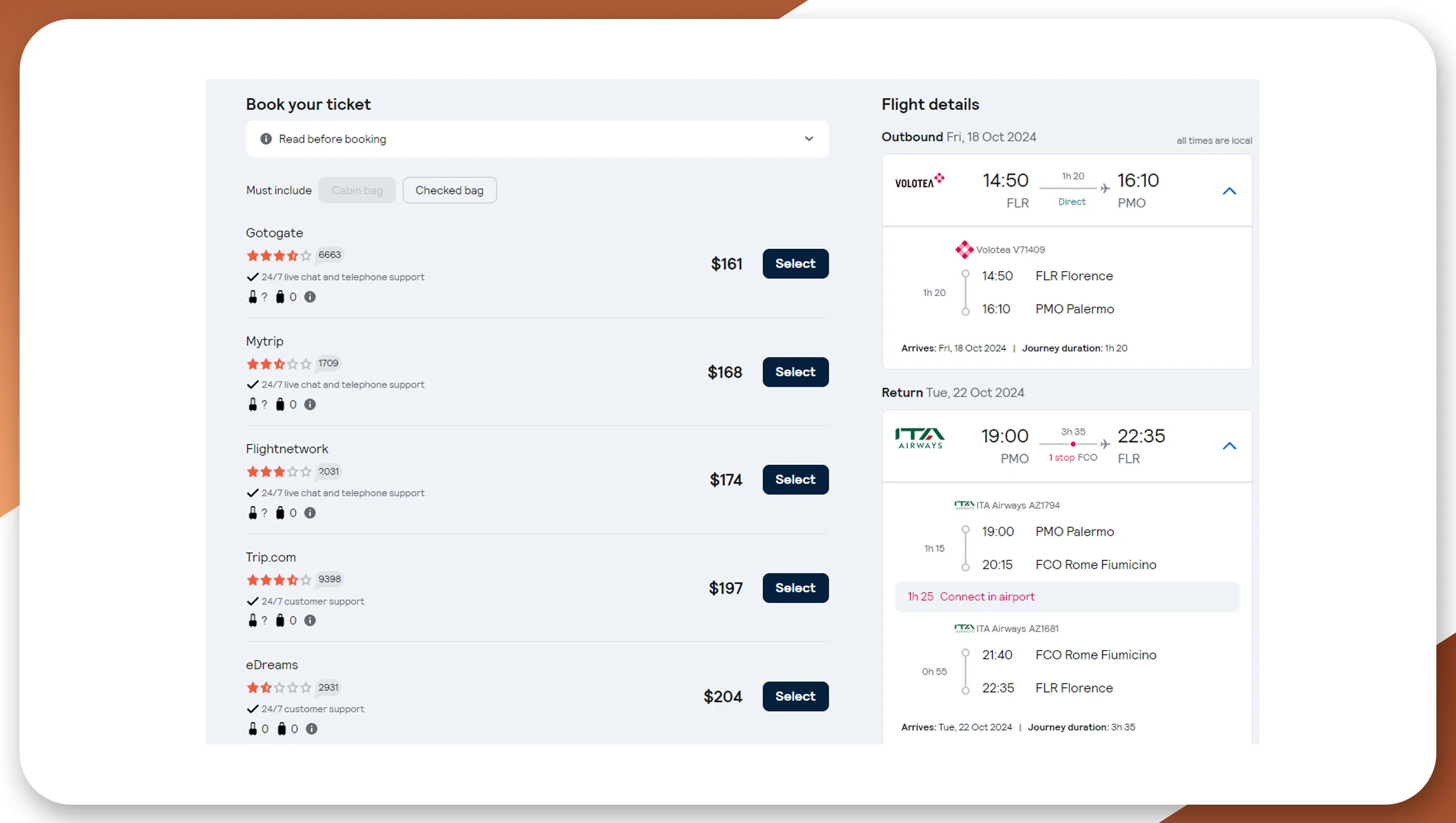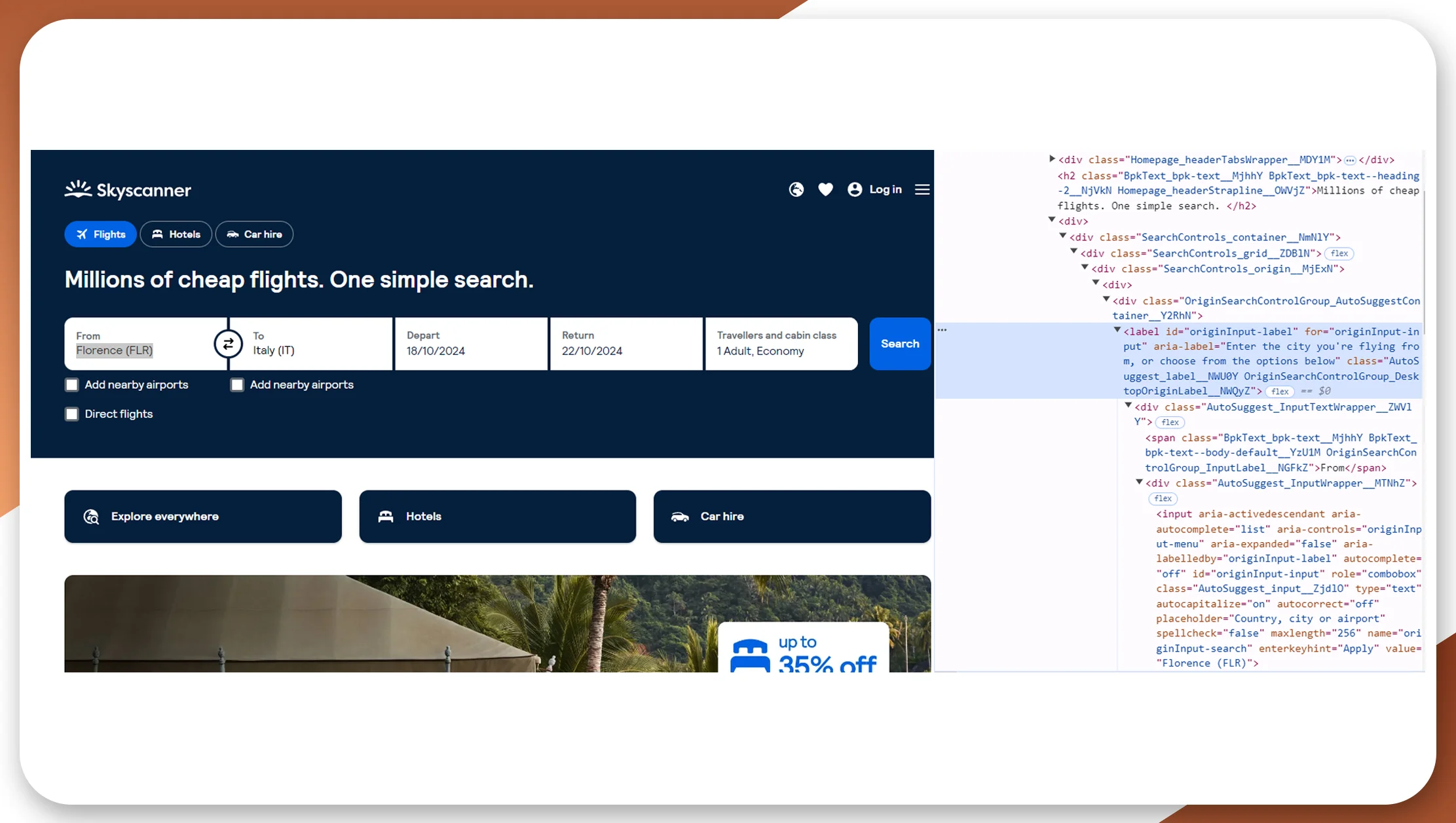

Introduction
Data has become a vital asset in the fast-paced world of travel and tourism. With millions of travelers seeking the best deals on flights, accommodations, and attractions, having access to comprehensive and accurate travel data can make all the difference. One of the most powerful tools in this space is the Skyscanner Flight Scraper API. This API allows businesses to scrape vast amounts of flight and travel data from Skyscanner, enabling them to optimize their services, improve customer experiences, and ultimately drive revenue.
In this blog, we'll explore how Scraping Skyscanner Scraper API can boost your travel business, dive into its capabilities, and provide relevant statistics and use cases highlighting its importance in 2024.
The Importance of Travel Data in 2024

As we move into 2024, the travel industry is expected to continue recovering from the pandemic's impacts, with travel demand surging. According to industry forecasts, global travel spending is projected to reach approximately $1.5 trillion by the end of 2024, with a significant portion driven by online bookings. In this environment, access to real-time travel data becomes crucial for businesses seeking to capture their market share.
Key Statistics:
The global online travel booking market is expected to grow at a CAGR of 9.5%, reaching $1,155 billion by 2024.
72% of travelers research their trips online before making a booking.
Data-driven personalization can increase customer loyalty by up to 50%.
With these trends, leveraging tools like the Skyscanner Scraper API can empower businesses to stay competitive.
What Is the Skyscanner Flight Scraper API?

Scrape Skyscanner Scraper API is a powerful tool that enables businesses to access and collect real-time flight data from Skyscanner, one of the world's leading travel search engines. The API provides an extensive range of features, including:
Flight Pricing: Access to real-time pricing for various routes allows businesses to stay updated with market changes.
Availability: Insights into flight availability from multiple airlines, helping users find the best options quickly.
Destination Information: Details about travel destinations, including popular attractions and hotel options.
User Reviews: Access to traveler reviews, enhancing the data available for personalized customer recommendations.
Travel companies can streamline their operations and enhance their service offerings by integrating the Skyscanner Flight Scraper API into their platforms.
Benefits of Using the Skyscanner Flight Scraper API

1. Enhanced User Experience
With the ability to scrape flight and hotel price data from Skyscanner, businesses can offer users a seamless booking experience. By providing real-time information on prices and availability, companies can ensure that customers find the best deals without hassle. This enhanced user experience can lead to increased conversions and customer loyalty.
2. Competitive Pricing Analysis
Businesses can use the Skyscanner API travel data scraping capabilities to monitor competitors' pricing strategies. This competitive intelligence allows companies to adjust their prices dynamically based on real-time market trends, ensuring they remain attractive to price-sensitive travelers.
3. Tailored Recommendations
Businesses can analyze user behavior and preferences by scraping Skyscanner travel booking data. This information can be used to create personalized travel recommendations, increasing customer satisfaction and engagement. For example, businesses can highlight similar options tailored to their interests if a user frequently searches for beach destinations.
4. Comprehensive Market Insights
The ability to scrape Skyscanner Flight API data enables businesses to gather insights on popular travel routes, emerging destinations, and customer preferences. This data can inform marketing strategies and help companies position themselves effectively within the market.
5. Cost Efficiency
Leveraging the Skyscanner tourist attractions data scraping and Skyscanner hotel data extraction capabilities allows travel businesses to reduce operational costs. By automating data collection processes, companies can allocate resources more efficiently and focus on strategic initiatives rather than manual data entry.
Use Cases for the Skyscanner Flight Scraper API

Case Study 1: A Travel Booking Platform
A mid-sized travel booking platform integrated with Skyscanner travel reviews scraping to enhance its flight search functionality. By scraping Skyscanner flight data, the platform was able to offer users access to real-time pricing and availability across multiple airlines. As a result, user engagement increased by 35%, and conversion rates improved by 20% within three months of implementation.
Case Study 2: A Travel Comparison Website
A travel comparison website utilized the Scrape Skyscanner Flight API to gather comprehensive data on flight prices, hotel rates, and customer reviews. This data was analyzed to identify trends and patterns in consumer behavior. The website then optimized its content and marketing strategies accordingly, leading to a 50% increase in site traffic and a 40% boost in affiliate revenue over six months.
Case Study 3: A Vacation Rental Company
A vacation rental company employed Skyscanner vacation rental data scraping to assess market demand and adjust its pricing dynamically. The company optimized its rental prices by analyzing travel patterns and seasonal trends, resulting in a 30% increase in bookings during peak travel seasons.
Case Study 4: A Travel Agency
A travel agency utilized Skyscanner flight data scraping to monitor competitor offerings and pricing. The agency created competitive packages that included flights, accommodations, and tours by analyzing this data. This strategic approach led to a 25% increase in customer inquiries and a 15% increase in overall sales.
How to Get Started with the Skyscanner Flight Scraper API

Step 1: Sign Up for Access
To begin using Skyscanner hotel and price data scraping, businesses must sign up for an account on the Skyscanner developer portal. After registration, users can access API documentation and obtain an API key for authentication.
Step 2: Explore the API Documentation
The Skyscanner API provides detailed documentation on endpoints, data structures, and request/response formats. Familiarizing yourself with this information is crucial for effectively implementing the API in your applications.
Step 3: Integrate the API
Integrate the API into your existing systems or applications. Use Python, Java, or JavaScript programming languages to make API calls and handle responses. Ensure that your application can process the data collected from the API for analysis and presentation.
Step 4: Analyze and Optimize
Once integrated, start collecting data and analyzing it to gain insights. Use the data to optimize pricing, enhance user experiences, and tailor recommendations. Continuously monitor performance and make adjustments based on market trends and user feedback.
Conclusion
Leveraging data is essential for success in the travel industry's competitive landscape. Skyscanner travel destination data extraction provides businesses with the tools necessary to access real-time flight and travel data, enabling them to make informed decisions and enhance their offerings.
As travel demand continues to rise in 2024, utilizing tools like the Skyscanner Scraper API will empower businesses to stay ahead of the competition. Companies can capture a larger market share and drive revenue growth by enhancing user experiences, optimizing pricing strategies, and providing tailored recommendations.
Embrace the power of travel data today and unlock new opportunities for your travel business when you Scrape Skyscanner Airline & Flight Ticket Data! With Real Data API, you can effortlessly access accurate and up-to-date flight information. Additionally, our services enable you to Scrape Travel Data and conduct Skyscanner Hotel Data Scraping to enhance your offerings further. Start transforming your travel services now—contact us to learn how our API can elevate your business!















